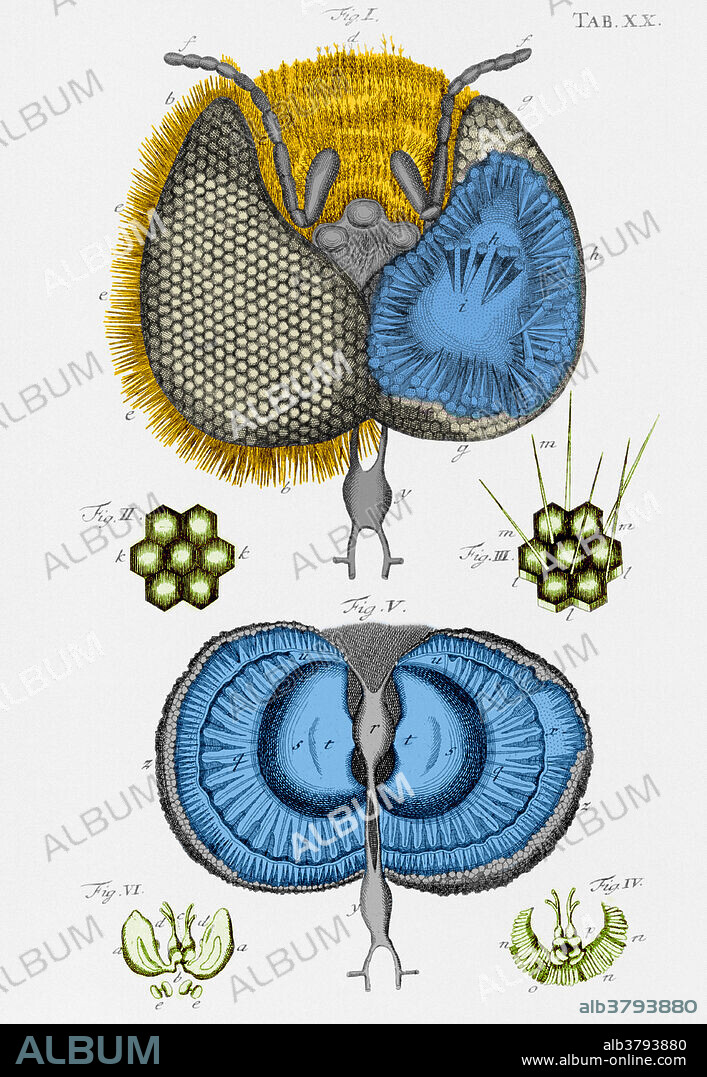alb3793880
Historical Illustration of Honey Bee Eye

|
Ajouter à une autre Lightbox |
|
Ajouter à une autre Lightbox |



Avez-vous déjà un compte? S'identifier
Vous n'avez pas de compte ? S'inscrire
Acheter cette image

Titre:
Historical Illustration of Honey Bee Eye
Légende:
Voir la traduction automatique
Honey bee eye. Drawing of the structure of the eye of a honey bee (Apis mellifera) by the Dutch naturalist Jan Swammerdam (1637-1680). The individual components of the eye are shown. These consist of long rods (ommatidia) which have a hexagonal lens at the top end, and taper to a nerve bundle at the base. Swammerdam studied medicine, but never practiced it, and instead used his microscope to study insects. This, and hundreds of other drawings, were published posthumously in the celebrated Bybel der Nature in 1737. His studies of metamorphosis form the basis of insect classification today. He also studied mammalian muscles, and discovered red blood cells.
Crédit:
Album / Science Source / Photo Researchers
Autorisations:
Modèle: Non - Propriété: Non
Questions sur les droits?
Questions sur les droits?
Taille de l'image:
3322 x 4809 px | 45.7 MB
Taille d'impression:
28.1 x 40.7 cm | 11.1 x 16.0 in (300 dpi)
Mots clés:
ANATOMIE • CORPS YEUX • COULEUR • DIAGRAMME • EMPREINTE • FAUNE (ANIMAL) • FAUNE • ILLUSTRATION • INSECTE • INSECTES • MIEL • OEIL • YEUX • ZOOLOGIE
 Pinterest
Pinterest Twitter
Twitter Facebook
Facebook Copier le lien
Copier le lien Email
Email
